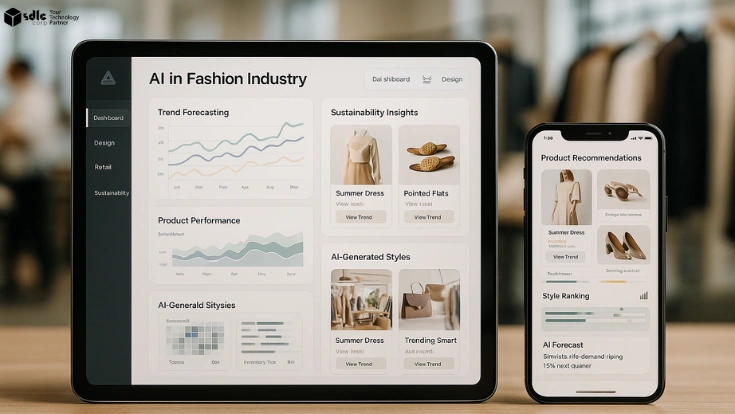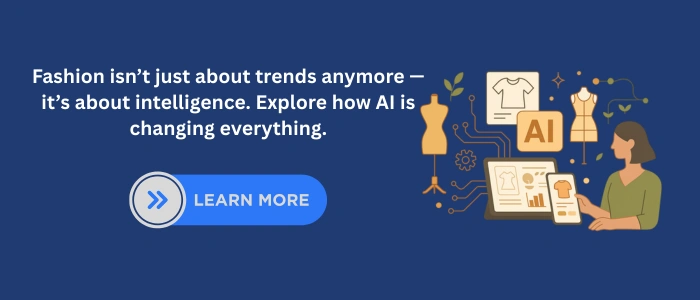Introduction
AI in fashion industry is no longer a distant concept. Today, leading brands, designers, and retailers are using artificial intelligence to reimagine how clothing is designed, manufactured, and sold. From AI fashion solutions that improve trend forecasting to artificial intelligence in fashion that personalizes customer experiences, this technology is reshaping every step of the value chain.
Unlike many industries where AI adoption is gradual, fashion has seen rapid integration because of its fast cycles, shifting consumer demands, and need for efficiency. As a result, AI for fashion retail enables companies to optimize inventory, reduce waste, and increase customer satisfaction. Meanwhile, AI in fashion design and trends allows creative teams to combine intuition with predictive analytics, identifying future styles more accurately than ever before.
This blog explores how AI is transforming the industry, the challenges it addresses, and the future it is creating. In addition, machine learning in fashion industry applications will also be discussed to highlight the operational efficiencies and innovation opportunities available to both global brands and smaller fashion houses.
For more insights, read our guide on AI Development Services to see how different industries benefit from smart AI adoption.
How AI Transforms Fashion Industry Operations
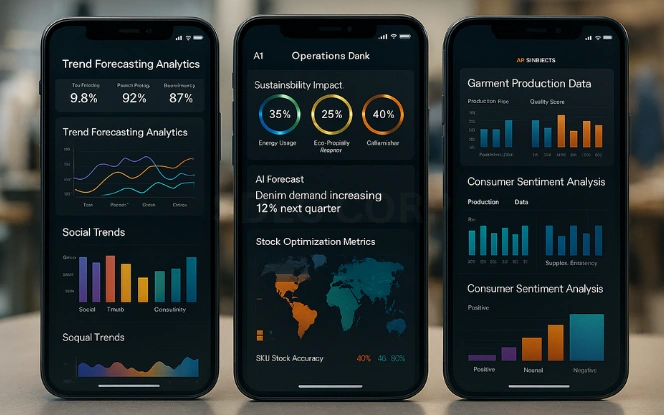
Fashion is built on speed, creativity, and consumer attention. In such an environment, relying on traditional forecasting methods is risky. However, artificial intelligence in fashion provides data-driven support that reduces uncertainty and improves outcomes.
Key areas where AI transforms operations:
- Trend Forecasting
AI analyzes millions of social media posts, search queries, and online shopping behaviors. Consequently, it identifies what consumers want next, giving brands a competitive advantage. - Sustainability Improvements
By predicting demand more accurately, AI helps reduce overproduction and waste. Moreover, it allows brands to align with sustainability goals without compromising profitability. - Inventory Optimization
Retailers use machine learning to manage stock more efficiently. As a result, popular items remain available while costly overstocking is avoided. - Personalization
AI-powered recommendation engines give shoppers product suggestions based on browsing behavior, past purchases, and preferences. Therefore, each shopping experience becomes more engaging and relevant.
You may also want to explore AI in Supply Chain Management to understand how predictive tools improve efficiency beyond retail.
AI Fashion Solutions in Design and Manufacturing
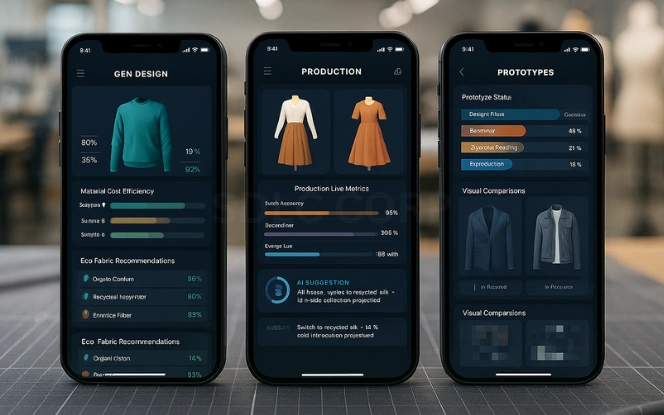
AI fashion solutions are changing how clothing is designed, prototyped, and produced. Moreover, AI in fashion design and trends combines creative instincts with predictive modeling, making the process more efficient.
Applications include:
- Generative Design Tools
AI helps designers explore new patterns, fabrics, and silhouettes by generating design variations. Therefore, creative teams can test more ideas in less time. - Material Innovation
AI models recommend sustainable alternatives by analyzing durability, cost, and environmental impact. As a result, eco-friendly fashion becomes easier to adopt. - Prototype Speed
Machine learning shortens prototyping cycles, allowing designers to move from concept to sample more quickly. In addition, it lowers costs and accelerates time-to-market. - Mass Customization
AI enables made-to-order fashion at scale, reducing waste and satisfying unique customer preferences. Consequently, brands can deliver more personalized collections while minimizing excess inventory.
Check out our blog on What is Generative AI? to learn how machine intelligence is fueling creativity across industries.
Artificial Intelligence in Fashion Retail
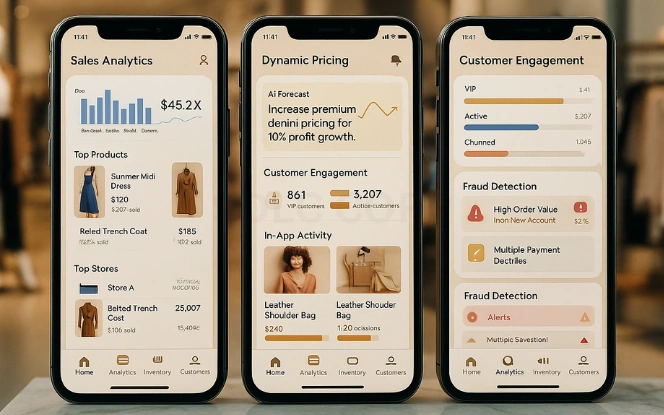
Retail has always been about matching supply with demand. Artificial intelligence in fashion is improving this match by offering predictive insights and smarter processes. In fact, AI for fashion retail is central to solving challenges in sales, supply chain, and customer experience.
Examples include:
- Smart Mirrors
AI-powered mirrors allow customers to try virtual outfits. Therefore, stores improve engagement and reduce fitting room queues. - Dynamic Pricing
AI adjusts prices in real-time based on demand, seasonality, and competitor activity. Moreover, it ensures competitive positioning while maximizing sales. - Fraud Detection
AI algorithms identify irregular purchasing patterns. As a result, fraud is reduced, and financial integrity is maintained. - Returns Reduction
AI tools analyze why products are returned. Consequently, brands adjust size charts and fit guidance, lowering return rates.
See how Generative AI for E-commerce parallels fashion retail by enhancing personalization and driving better shopping experiences.
AI in Fashion Design and Trends
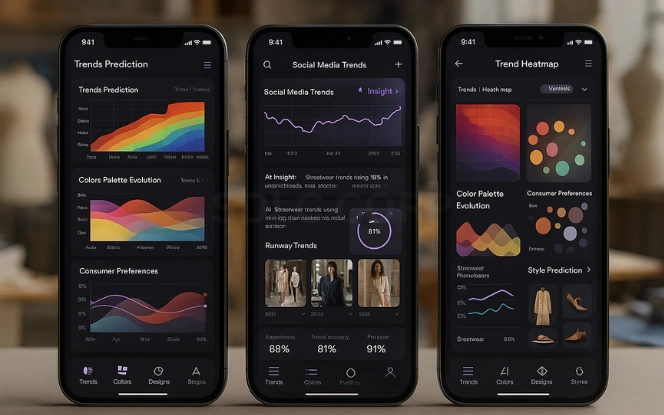
The heart of fashion is creativity. Designers must anticipate trends before they emerge. AI in fashion design and trends offers tools that expand creativity while validating ideas with data.
- Trend Identification
AI scans social platforms, blogs, and forums to identify emerging styles. Therefore, designers gain early insight into what consumers desire. - Style Matching
Algorithms detect patterns in customer preferences. As a result, they recommend styles that align with consumer interest. - Runway-to-Retail Conversion
AI analyzes runway shows and translates looks into affordable, ready-to-wear collections. Moreover, it shortens the design-to-retail timeline significantly. - Consumer Feedback Loops
AI gathers real-time reactions to new collections. Consequently, designers can refine products quickly based on customer input.
Check out AI Trends Across Industries for a wider view of how technology supports creative forecasting.
Machine Learning in Fashion Industry Operations
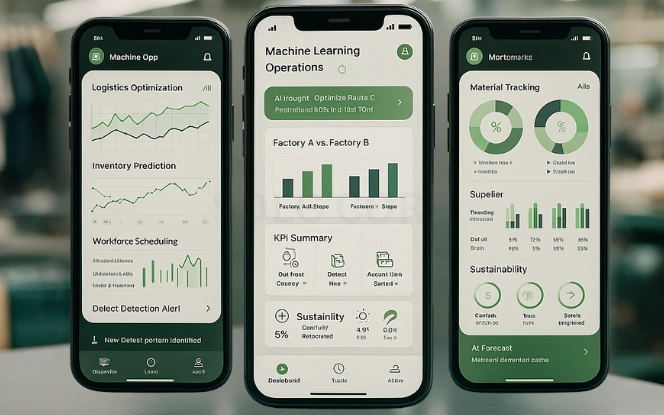
Fashion operations span design, production, logistics, and retail. Machine learning in the fashion industry streamlines these operations by making processes more efficient.
Applications include:
- Supply Chain Optimization
ML predicts delays and suggests alternative routes. Therefore, production disruptions are minimized. - Quality Control
AI detects manufacturing defects through computer vision. As a result, waste is reduced and product consistency improves. - Workforce Management
Predictive scheduling ensures staff availability during peak times. In addition, it prevents unnecessary overstaffing. - Sales Forecasting
ML predicts demand across seasons. Consequently, brands plan resources with greater accuracy.
Read more about AI in Logistics to explore how machine learning optimizes operations and reduces inefficiencies.
Consumer Personalization with AI
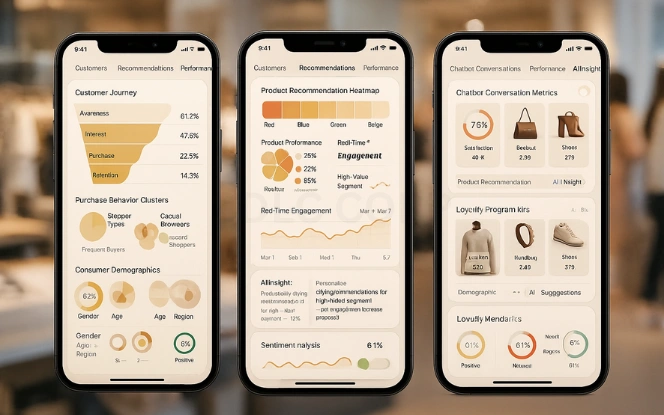
Consumers today expect personalized experiences. AI fashion solutions provide the tools to meet this demand efficiently.
Methods include:
- Product Recommendations
AI suggests clothing based on preferences and purchase history. Therefore, customers discover products they are more likely to buy. - Styling Assistance
Virtual stylists recommend complete outfits. As a result, basket sizes and satisfaction levels increase. - Chatbots and Assistants
AI chatbots handle questions instantly. Moreover, they improve customer service while lowering costs. - Visual Search
Customers upload photos, and AI finds similar products. Consequently, discovery becomes faster and more engaging.
Ethical Considerations of AI in Fashion

While AI offers benefits, it also raises challenges. For example, privacy, bias, and job displacement require careful oversight.
- Data Privacy
Fashion retailers collect sensitive consumer data. Therefore, strong compliance is essential. - Bias Risks
Algorithms may unintentionally reinforce stereotypes. Consequently, fairness audits are critical. - Sustainability Gaps
AI reduces waste, but without ethical planning, it risks fueling fast fashion. - Job Displacement
Automation may replace some roles. However, it can also create new opportunities in tech-driven fashion roles.
Future of AI in Fashion Industry

The future of AI in fashion industry looks dynamic. Moreover, AI in fashion design and trends will continue to integrate with creative processes, enabling collaboration between humans and machines.
Emerging directions include:
- Hyper-Personalized Shopping
Platforms may predict needs before customers begin browsing. - Digital Fashion
AI could create virtual clothing for digital identities. - Sustainability Leadership
AI tools will help brands reach climate goals through smart resource use. - Cross-Sector Collaboration
AI may link fashion with industries like gaming and entertainment.
Consequently, brands that adopt AI strategically will strengthen creativity, efficiency, and sustainability.
Conclusion
AI is changing fashion from design studios to global retail chains. AI fashion solutions empower brands to create smarter designs, manage production efficiently, and deliver personalized shopping experiences. Artificial intelligence in fashion also supports sustainability while enabling brands to anticipate consumer demand.
Tools such as AI for fashion retail, AI in fashion design and trends, and machine learning in the fashion industry are not futuristic concepts. Instead, they are practical solutions that companies can implement today to remain competitive.
Contact us SDLC corp to explore how AI can reshape your fashion business. Hire AI Development Services with SDLC Corp to build solutions that align with your creative vision, operational needs, and sustainability goals.
FAQs
How Is AI In The Fashion Industry Used Today?
AI in fashion industry is used for trend forecasting, personalized shopping recommendations, smart mirrors, and efficient supply chain management.
What Are The Main Advantages Of AI Fashion Solutions?
AI fashion solutions provide benefits such as better inventory planning, improved sustainability, personalized retail experiences, and faster design-to-market cycles.
How Does Artificial Intelligence In Fashion Help Designers?
Artificial intelligence in fashion supports designers by generating new concepts, predicting emerging styles, suggesting materials, and reducing prototyping time.
Why Is AI In Fashion Design And Trends Important For Brands?
AI in fashion design and trends is important because it helps brands analyze consumer behavior, validate creative ideas, and reduce the risk of failed collections.
How Does Machine Learning In The Fashion Industry Improve Operations?
Machine learning in fashion industry improves operations by forecasting sales, detecting defects in production, managing logistics, and automating workforce schedules

